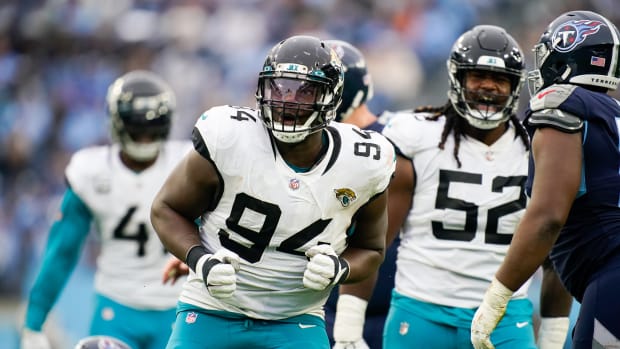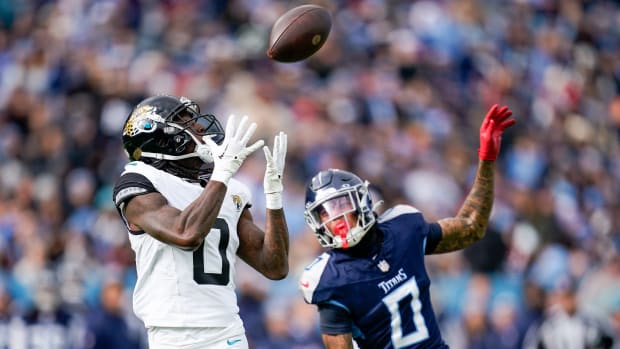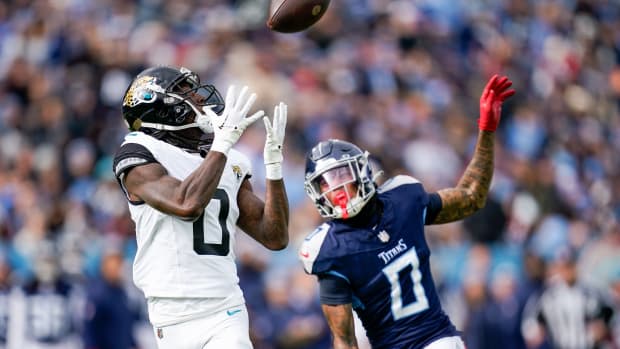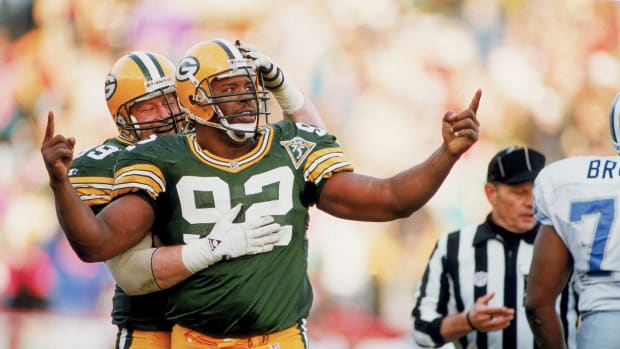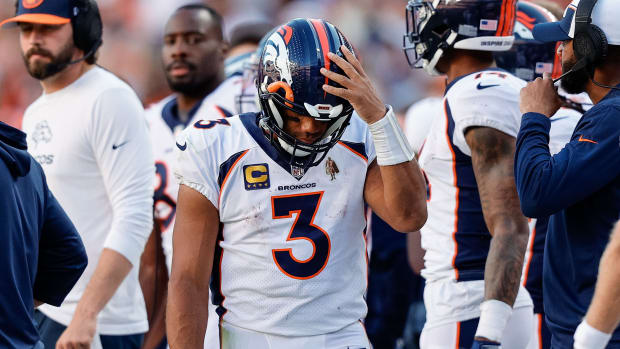What the Numbers Say About Jaguars OC Jay Gruden’s Past Offenses, Part 2: How Gardner Minshew Fits
Note: for part one of this series, which looks at the past success of previous offenses orchestrated by Jay Gruden, click here.
Entering the 2020 season, there is no relationship that is more important to the potential success of the Jacksonville Jaguars than that of their new offensive coordinator and their second-year quarterback.
First-year coordinator Jay Gruden will be tasked with improving Jacksonville’s historically woeful offense, which seems feasible considering the production of his past offenses as discussed in a previous article. To do so, he must develop potential franchise quarterback Gardner Minshew II.
Minshew won the city’s heart last season with his inspiring play and off-the-field swagger, but his potential as a legitimate long-term quarterback is still uncertain. Gruden’s success (or lack thereof) in helping Minshew as he enters his second NFL season will play a large part in the team’s 2020 performance and the overall future of the franchise.
Here’s how Gruden can help:
The use of play action and pre-snap motion are two methods that play callers can use to help his quarterback read defenses, have extra time in the pocket and find open receivers. Andy Reid, Kyle Shanahan and Sean McVay are among the best offensive minds in the game and their offenses continually use both strategies far above-average.
Jacksonville ranked 31st in play action rate and 32nd in pre-snap motion last season, per PFF.
Those are disappointing numbers, to say the least. More pre-snap motion likely would have been a major advantage to Minshew, as he was a quick processor and would have benefited from additional knowledge of the defense’s coverage before the snap. But more play action would have been even more helpful.
On 477 non-play action dropbacks last season, Minshew had a 58.0% completion percentage, 6.4 yards per attempt, 83.9 passer rating and 4.0% touchdown rate. On 79 play action dropbacks, he had a 76.9% completion percentage, 10.7 yards per attempt, 136.4 passer rating and 7.7% touchdown rate.
Minshew had the lowest play action rate in the league last season (14.2%) despite having the best completion percentage and third-best passer rating among all quarterbacks on such throws, per PFF. On non-play action throws, his completion percentage worsened by 18.9% (!), most in the NFL, and his yards per attempt worsened by 4.4, sixth-most in the NFL.
Play action was undoubtedly a major benefit for Minshew. Ideally, Gruden will use play action much more this upcoming season, but that may be wishful thinking. Only one former Gruden quarterback has had a play action rate greater than 21%: Robert Griffin III in 2014. Kirk Cousins and Andy Dalton, who are not nearly as threatening with their legs, never ranked top-20 in play action rate in a single season under Gruden.
Minshew will almost certainly have more play action drop backs next season, but it probably still won’t be at a satisfying rate.
Another interesting topic is downfield aggression. Last season, Minshew was one of the best deep passers in the league- he ranked top-3 in passer rating, PFF grade and ESPN’s QBR on attempts 20-plus yards downfield. However, he attempted such passes at a low rate. His deep pass rate of 10.4% ranked 26th according to PFF.
This is fascinating because a former Gruden quarterback was in a similar situation. Through the first half of the 2017 season, Kirk Cousins ranked top-10 in adjusted completion percentage, quarterback rating and yards per attempt on deep throws but 26th in deep throw rate.
Gruden commented in a post-practice interview that he wanted Cousins to throw downfield more often. “That’s probably the one area that we can force the issue on a little bit to give these receivers chances down the field... when the ball is complete, I never criticize. We just always talk about other options possible for the next time we call it.”
Cousins subsequently increased his deep pass rate from 9.7% to 14.2% for the remainder of the season, which ranked ninth in that time period. Gruden may have a similar conversation at some point with Minshew, who ranked 26th in deep pass rate, third in checkdown rate and first in scramble rate last season.
Checkdowns and scrambles aren’t terrible, considering the alternative of a sack, but in excess, both can be burdening. An average pass play last season generated an EPA of 0.08; scrambles had an average EPA of 0.04 and checkdowns had an average EPA of -0.05, per PFF. Minshew had a negative EPA on both scrambles and checkdowns but an average EPA of 0.55 on throws 10-plus yards downfield.
This doesn’t mean that Minshew should swing for the fences every single play. But it would certainly be beneficial for him to increase his aggressiveness, like Cousins in 2017.
Minshew was able to keep the Jaguars alive in a few games last season with his legs and short throws, but he hasn’t proved to be accurate enough to necessarily make a career off of such a game-manager playing style like Alex Smith or Derek Carr. He played well last season considering the circumstances, but “conservative to a fault” is a fair generalization of his game thus far in his career.
If Minshew is going to be a legitimate franchise quarterback, he must be more aggressive down the field and prove that he can beat the defense consistently at every level. Jacksonville can only hope that Gruden can help coax that out of him in year two.
